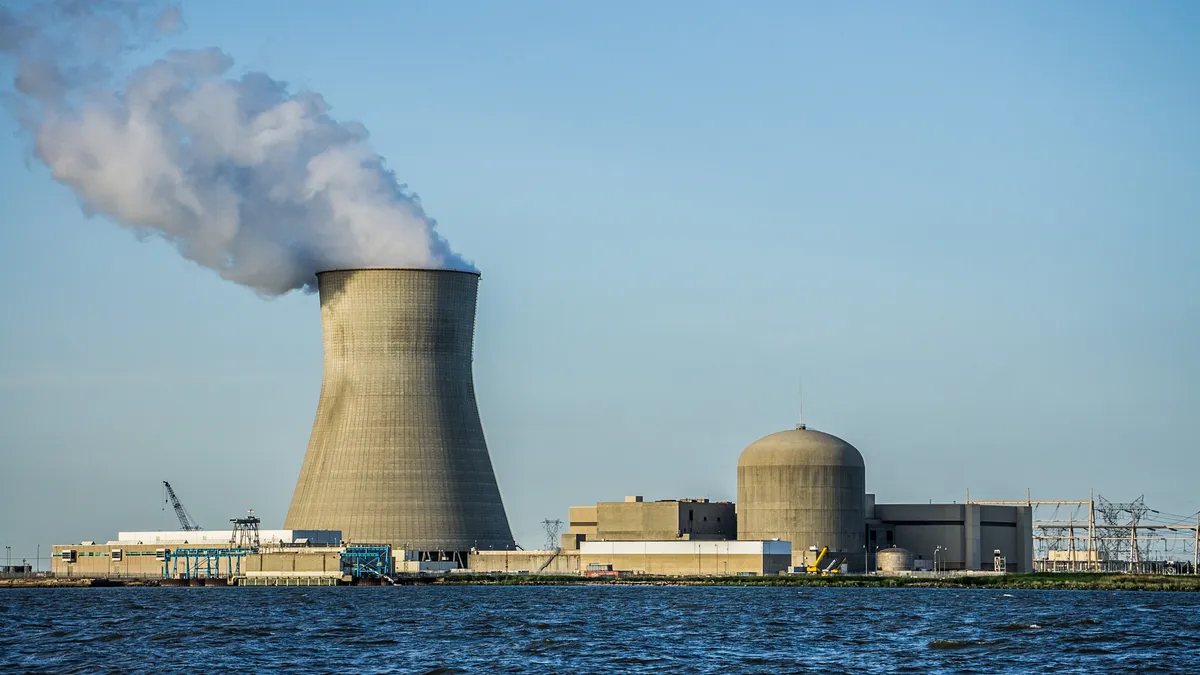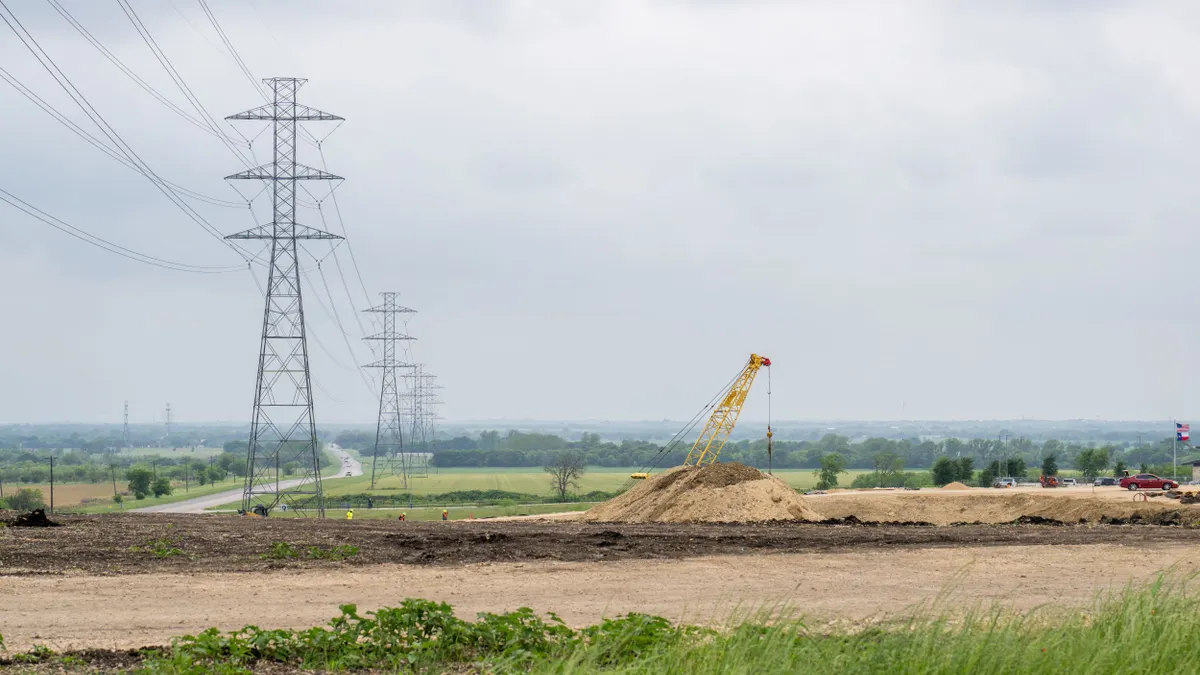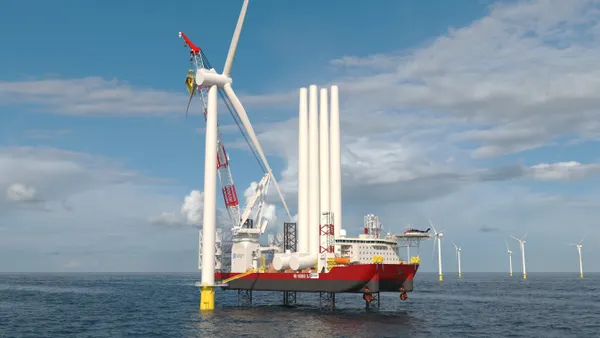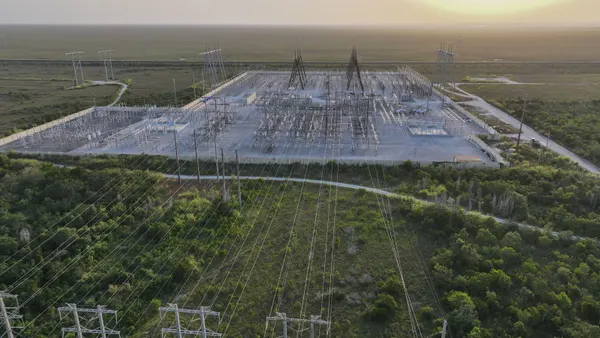Dive Brief:
- Public Service Electric & Gas is open to owning generating assets as one solution to ensuring New Jersey has adequate power supplies, according to Ralph LaRossa, chair, president and CEO of Public Service Enterprise Group, the utility’s parent company.
- Other options include attracting independent power producers to New Jersey or adding transmission lines to import electricity from other states, LaRossa said Wednesday during an earnings conference call.
- With electricity bills set to rise roughly 20% in New Jersey, mainly because of the PJM Interconnection’s last capacity auction, New Jersey lawmakers and its governor are exploring pathways to add power supplies to the state’s system, including by allowing utility-owned generation.
Dive Insight:
Affordability is a major concern in New Jersey and across the country, according to LaRossa. “It goes from eggs to energy,” he said. “From our standpoint, we want to do our part.”
PSE&G has about 2.4 million electric customers. The utility’s residential customers face a 17% rate increase on June 1, but the New Jersey Bureau of Public Utilities has asked the state’s utility to propose options for buffering the rate hike, LaRossa noted.
Near-term options include connecting customers to assistance programs, such as the Low Income Home Energy Assistance Program, energy efficiency programs and bill-payment programs, according to LaRossa.
In the long term, more power supplies are needed, LaRossa said. “We'd be more than willing to do it in rate base … or it could show up by new wires being built and bringing in generation from another location,” he said. “What I hear from policymakers in the state is that they would like to have more control over their destiny, and that would lead me to believe that we would want to have more generation in the state.”
However, building new power plants will take time, LaRossa said, noting it can take up to six years to procure turbines for power plants.
Meanwhile, PSE&G’s data center pipeline jumped to 6.4 GW as of March 31, up from 4.7 GW at the end of last year and from 400 MW at the start of 2024, according to LaRossa. PSE&G expects that roughly 10% to 25% of those interconnection study requests will come to fruition.
Adding large loads like data centers would allow PSE&G to spread its fixed costs over a wider customer base, easing cost pressure on the utility’s customers, LaRossa noted.
The company continues to discuss colocation deals with potential customers interested in buying electricity directly from the Hope Creek and Salem nuclear power plants in southern New Jersey, according to Dan Cregg, PSEG executive vice president and chief financial officer. PSEG Power owns 2,483 MW in the power plants. A deal is possible this year and isn’t contingent on the outcome of the Federal Energy Regulatory Commission’s investigation into PJM’s colocation rules, he said.
PSEG supports a request that FERC order parties hold settlement discussions to resolve the colocation dispute, according to LaRossa. “We would always like to see a settlement … that, to me, is always the best solution,” LaRossa said.
PSEG faces limited exposure to import tariffs, according to LaRossa. “The domestic concentration of our supply chain also limits the amount of tariff related cost pressure,” he said.
In its quarterly report filed on Wednesday with the US. Securities Exchange Commission, PSEG noted President Donald Trump has signed executive orders addressing power generation and orders imposing “widespread and substantial” import tariffs.
“Although certain of these tariffs have been temporarily stayed, the situation is fluid and subject to rapid change,” PSEG said. “We are continuing to monitor the federal executive orders, certain of which will require the enactment of regulations to implement, and whether tariffs and any resulting retaliatory trade measures taken against the U.S., could disrupt or impact our supply chain, business, cash flow, results of operations and or financial condition.”
PSEG’s income jumped 11% to $589 million, or $1.18/share, in the first quarter, up from $532 million, or $1.06/share, a year ago, largely driven by rate increases, according to Cregg. Revenue increased to $3.2 billion in the quarter from $2.8 billion in the year-ago period.















